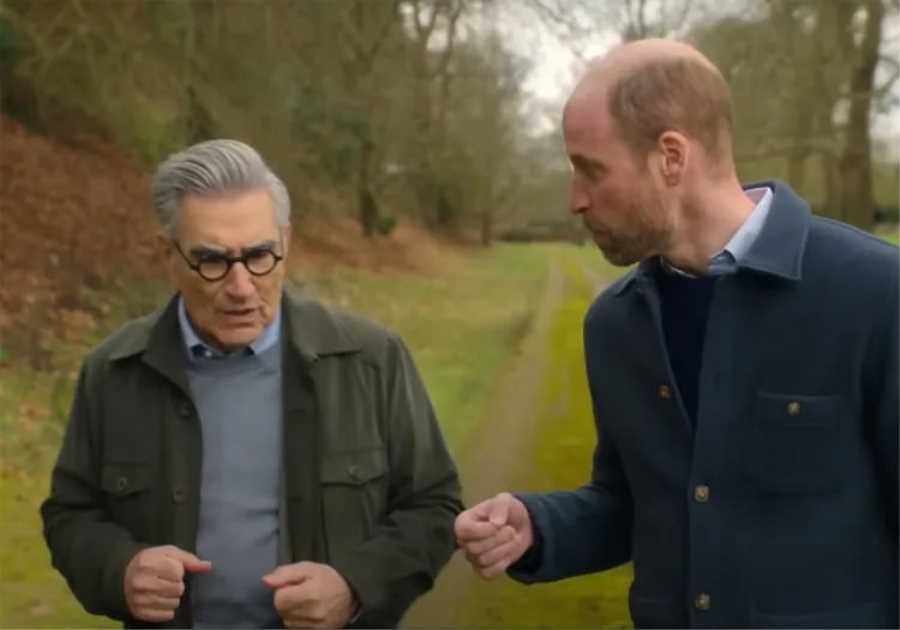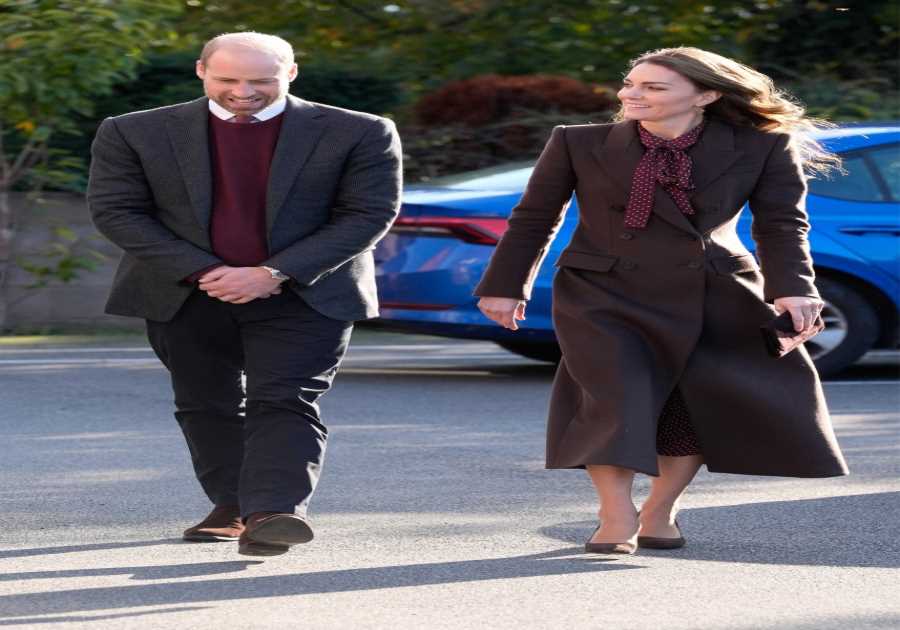GUN salutes have been fired across the UK, in Gibraltar and at sea to mark the death of the Duke of Edinburgh at the age of 99.
Solemn “death gun salutes” took place in London, Belfast, Cardiff and Edinburgh as well as from Naval bases in Portsmouth, Plymouth and the Rock of Gibraltar.

Read our live blog for the very latest news on Prince Philip’s death…
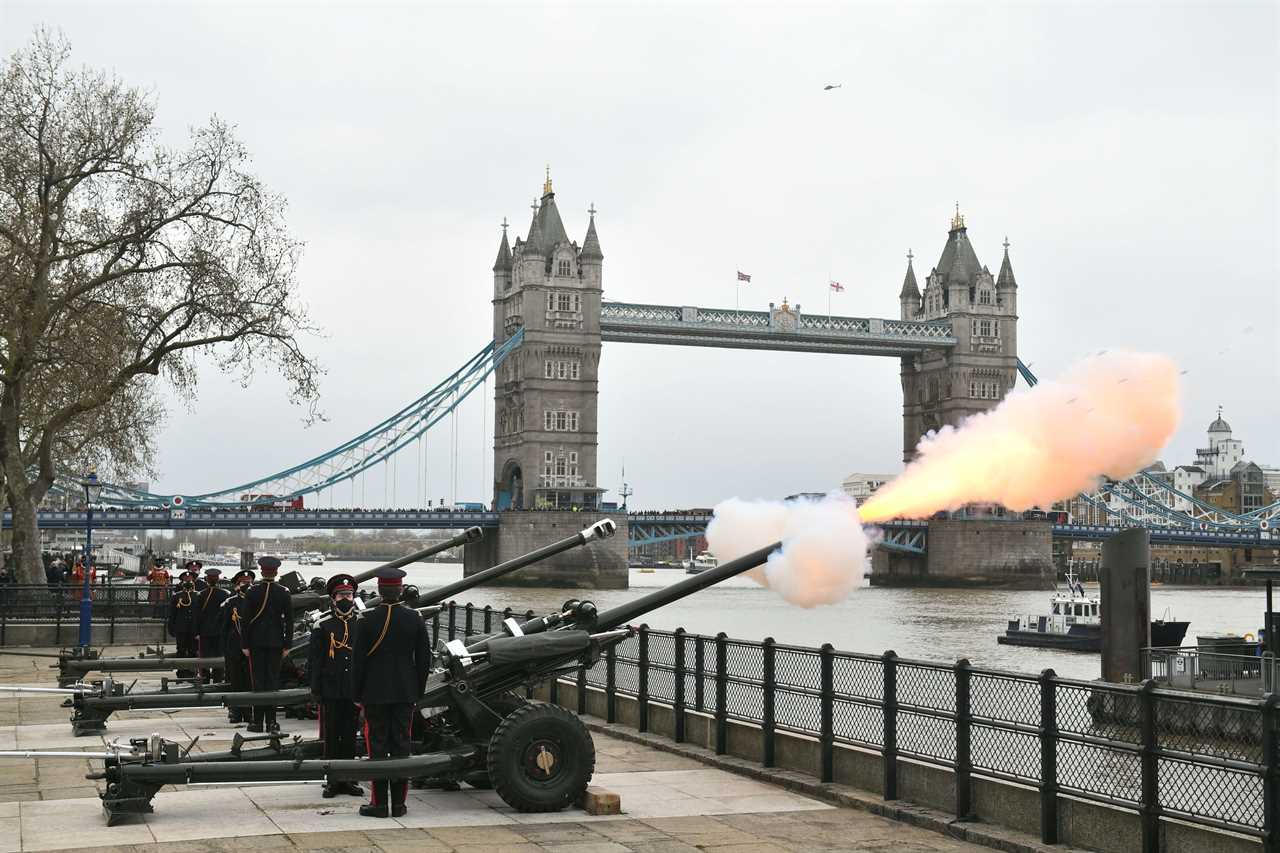
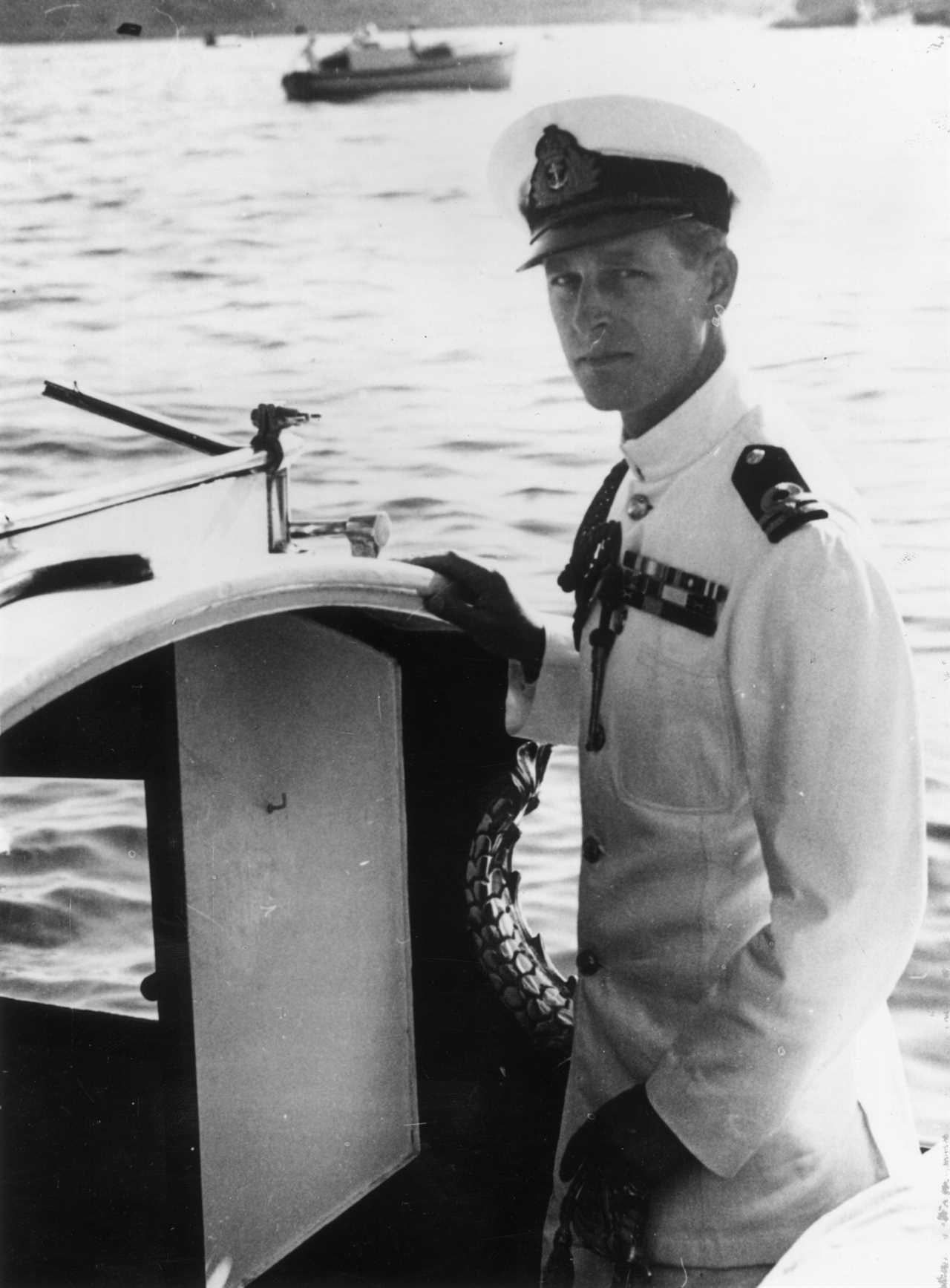
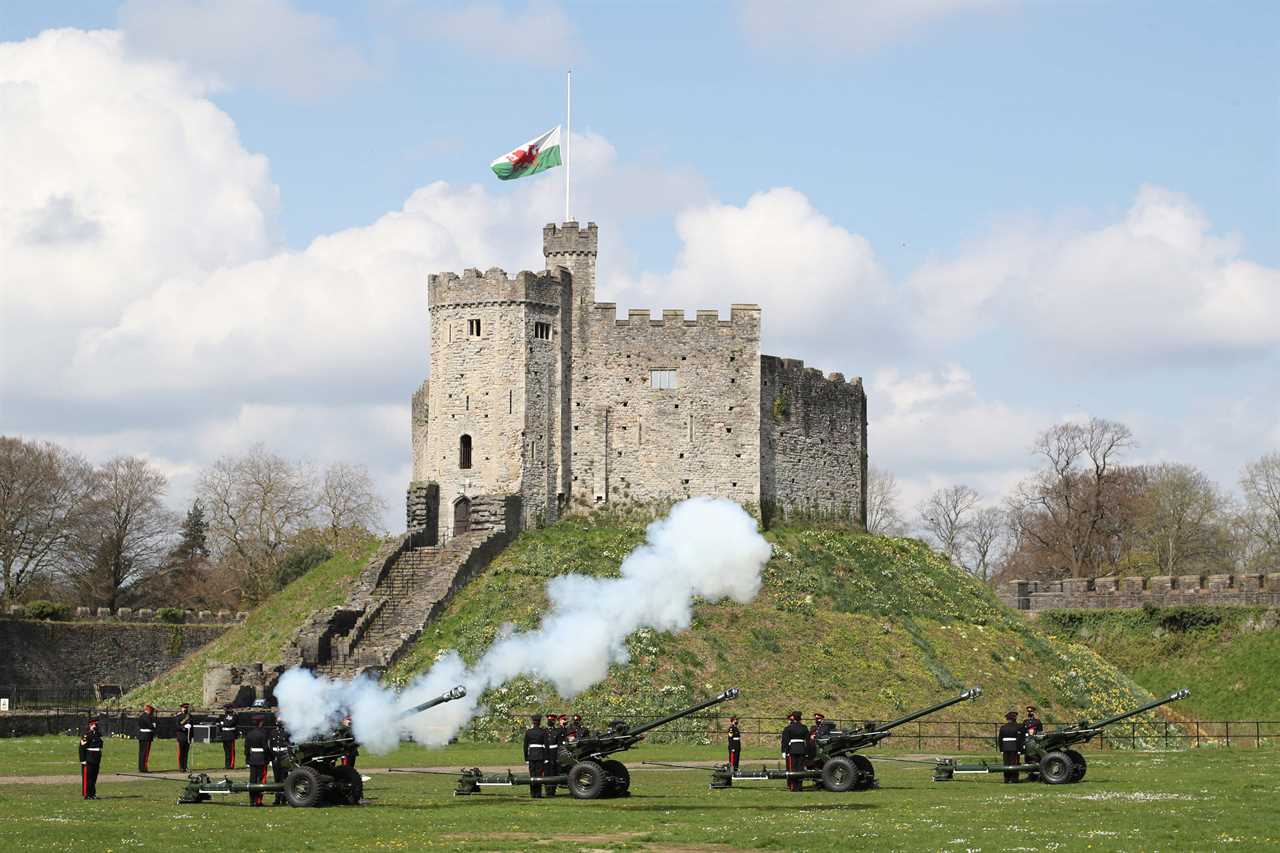
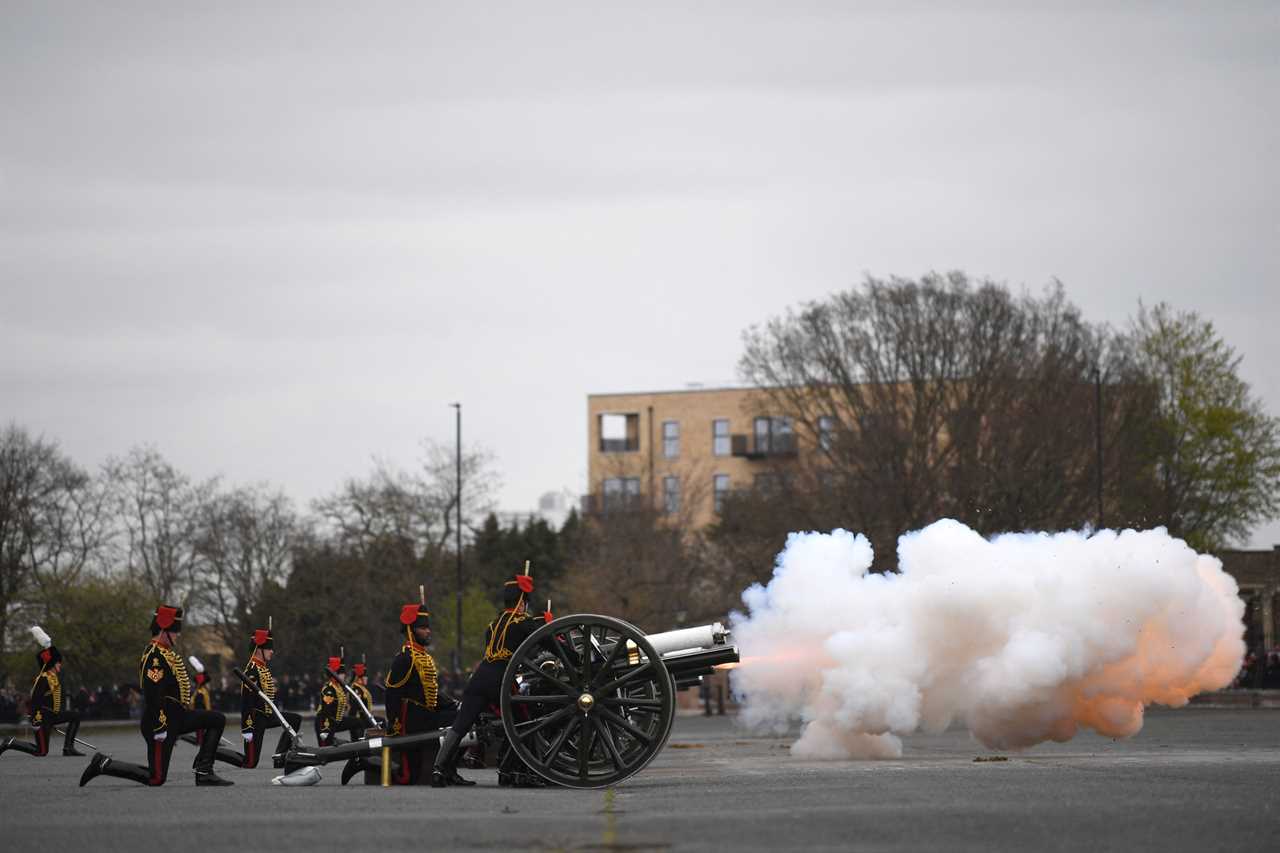
Ships taking part included HMS Diamond, HMS Montrose and HMNB Portsmouth, while the Royal Gibraltar Regiment joined the salute from the British overseas territory, the Ministry of Defence said.
The public were encouraged to observe the gun salutes, which are fired to mark significant national events, on television or online, rather than gathering in crowds to watch outside.
HMS Diamond, a Daring class destroyer, lead the salutes at sea.
The 8,000 tonne warship – known as the “jewel in the naval crown” – set sail from Portsmouth on Friday with her Ensign flying at half mast.
She is the modern successor to the destroyers the Duke of Edinburgh served on during World War Two.
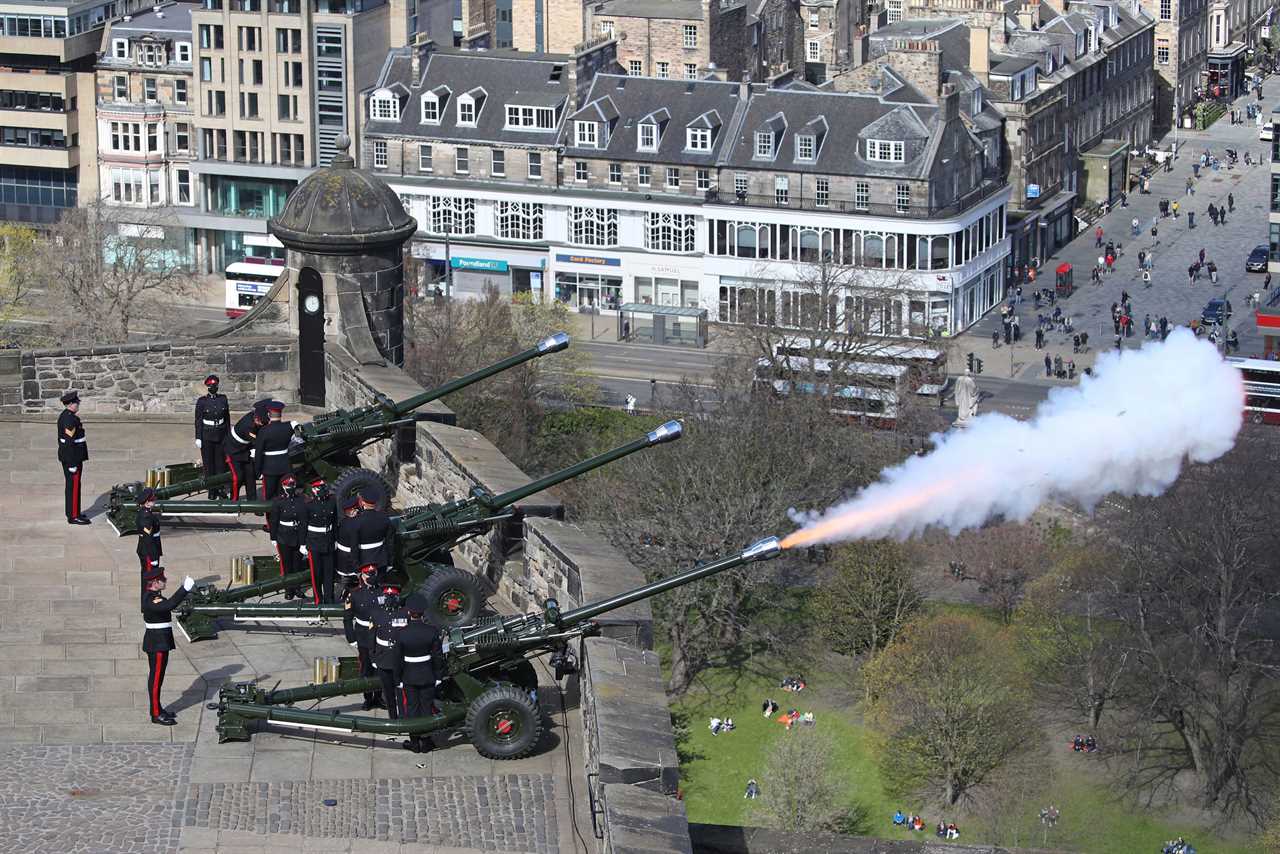
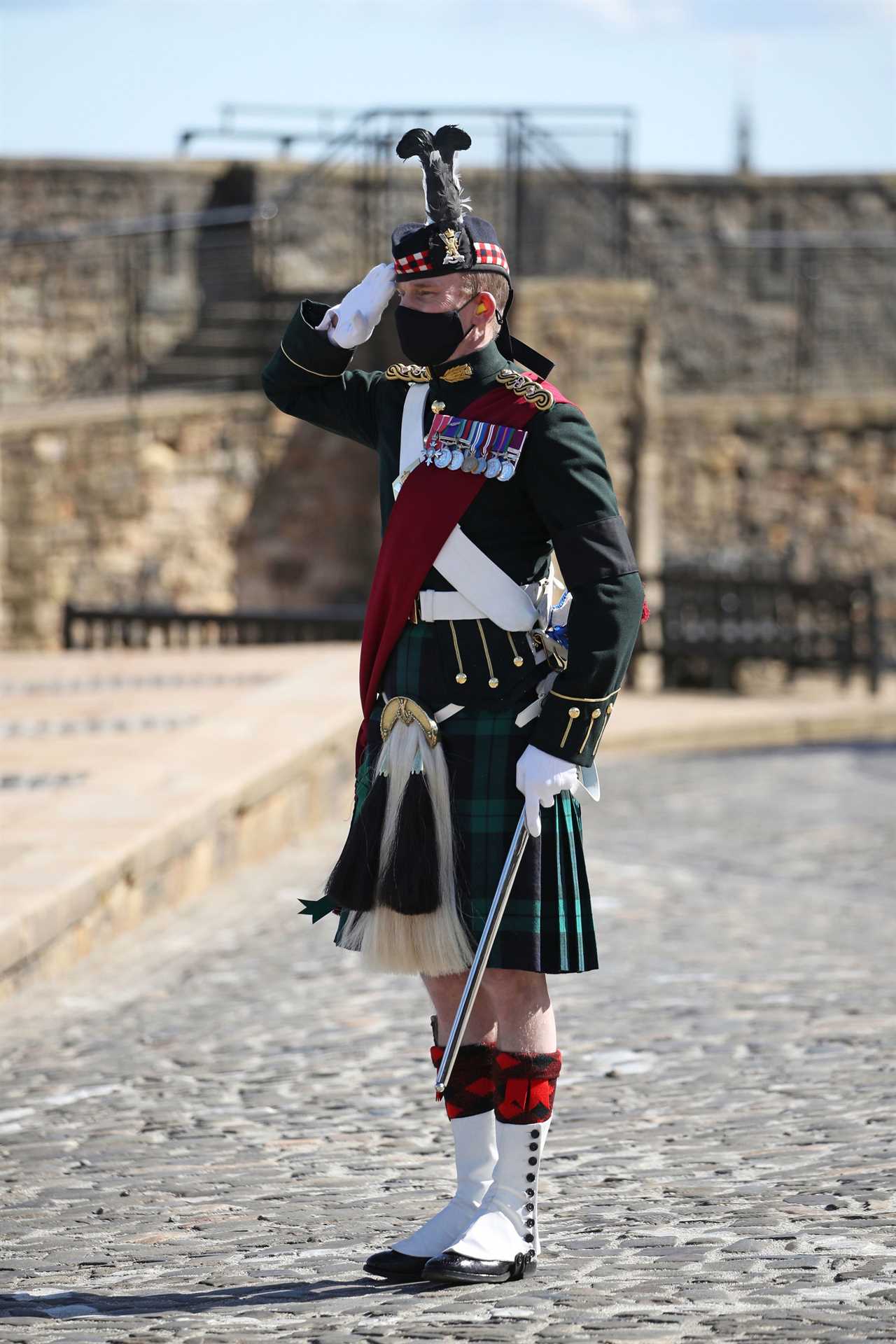
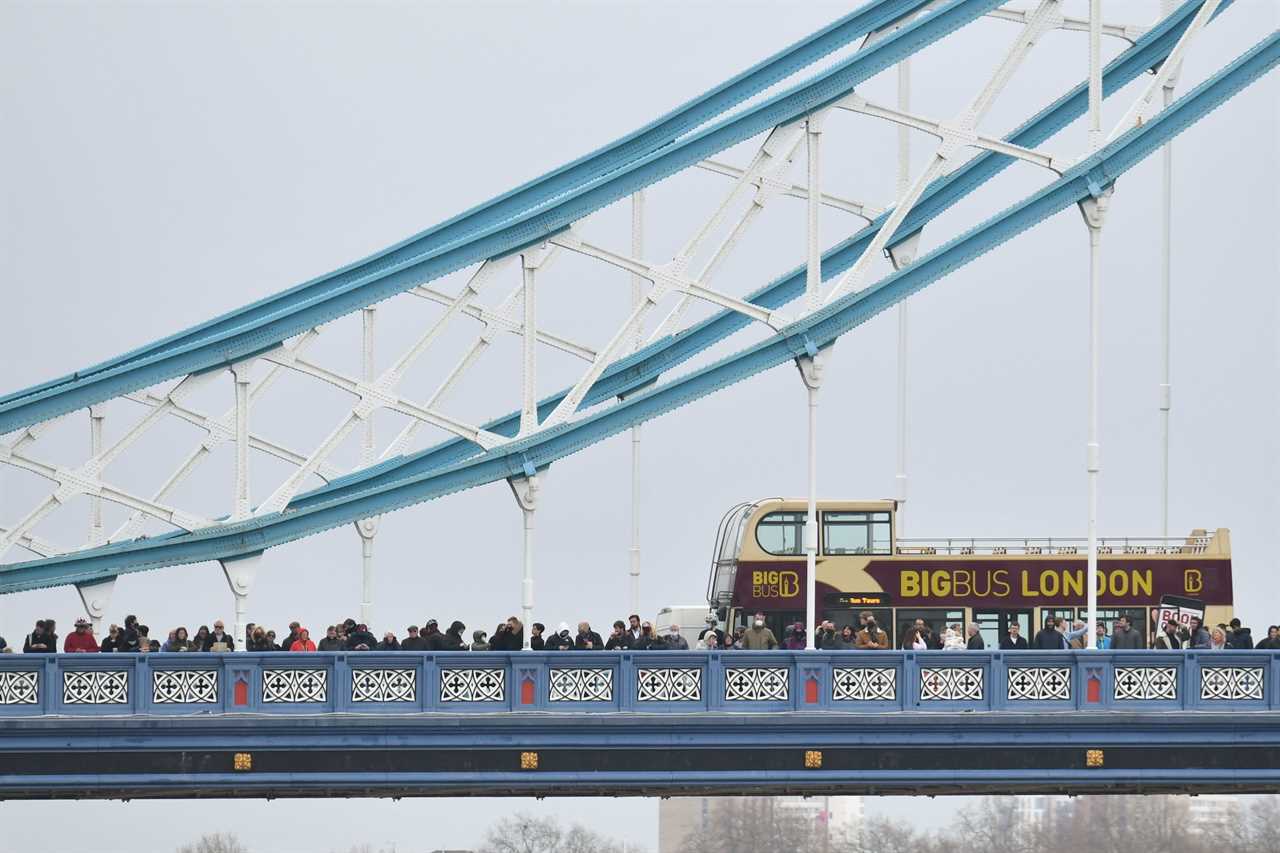
HMS Montrose, a Type 23 Frigate, also fired her 4.5 inch main gun in the Gulf where she is based.
Prince Philip saw 14 years active service in the Royal Navy.
“Across the United Kingdom, in Gibraltar and on HM Ships at sea, saluting batteries will fire 41 rounds at one round every minute for 40 minutes,” the MoD said.
In London, the King’s Troop, Royal Horse Artillery, is firing 36 horse-drawn guns at a parade ground in Woolwich Barracks.
The 13-pounder guns, which date from World War One, were the same ones used to mark Prince Philip’s marriage to the Queen in 1947 and they were fired at her coronation in 1953.
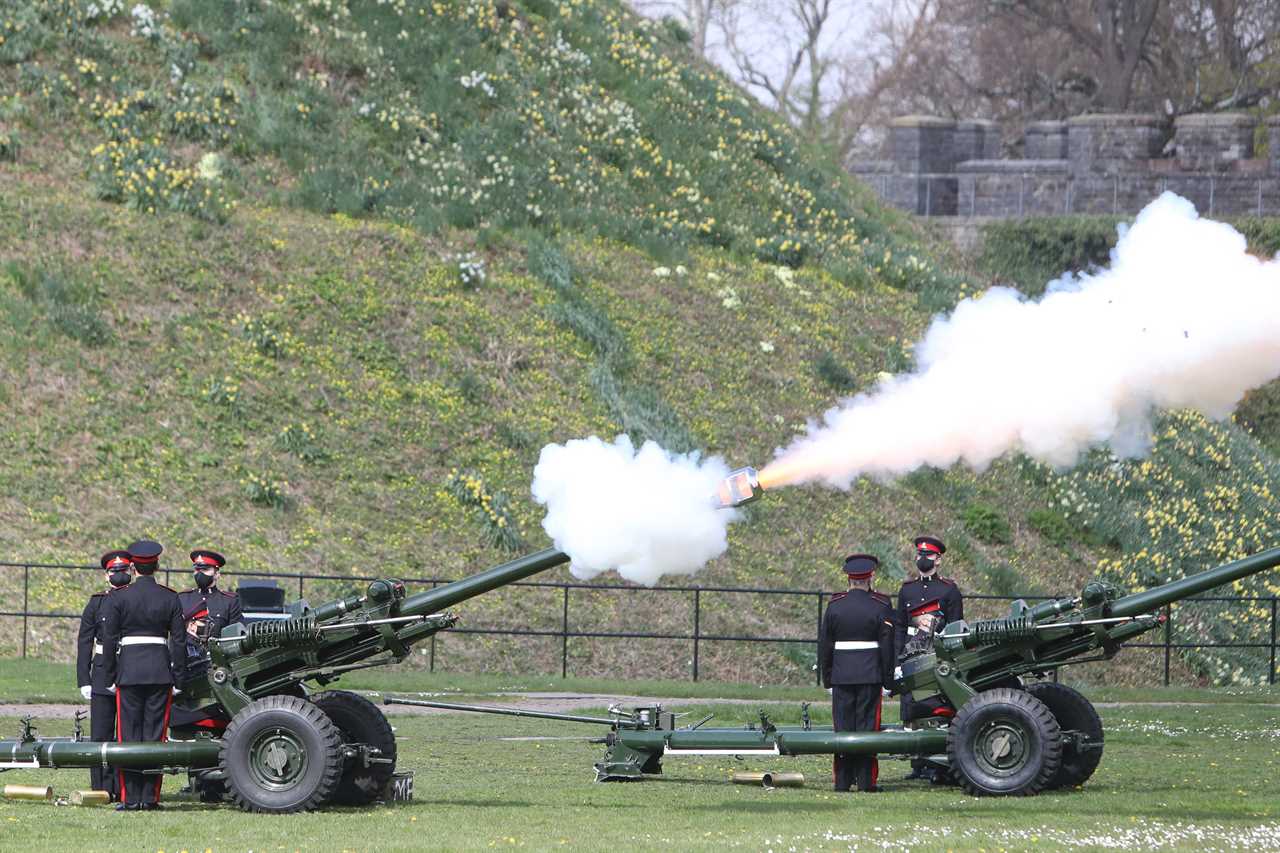
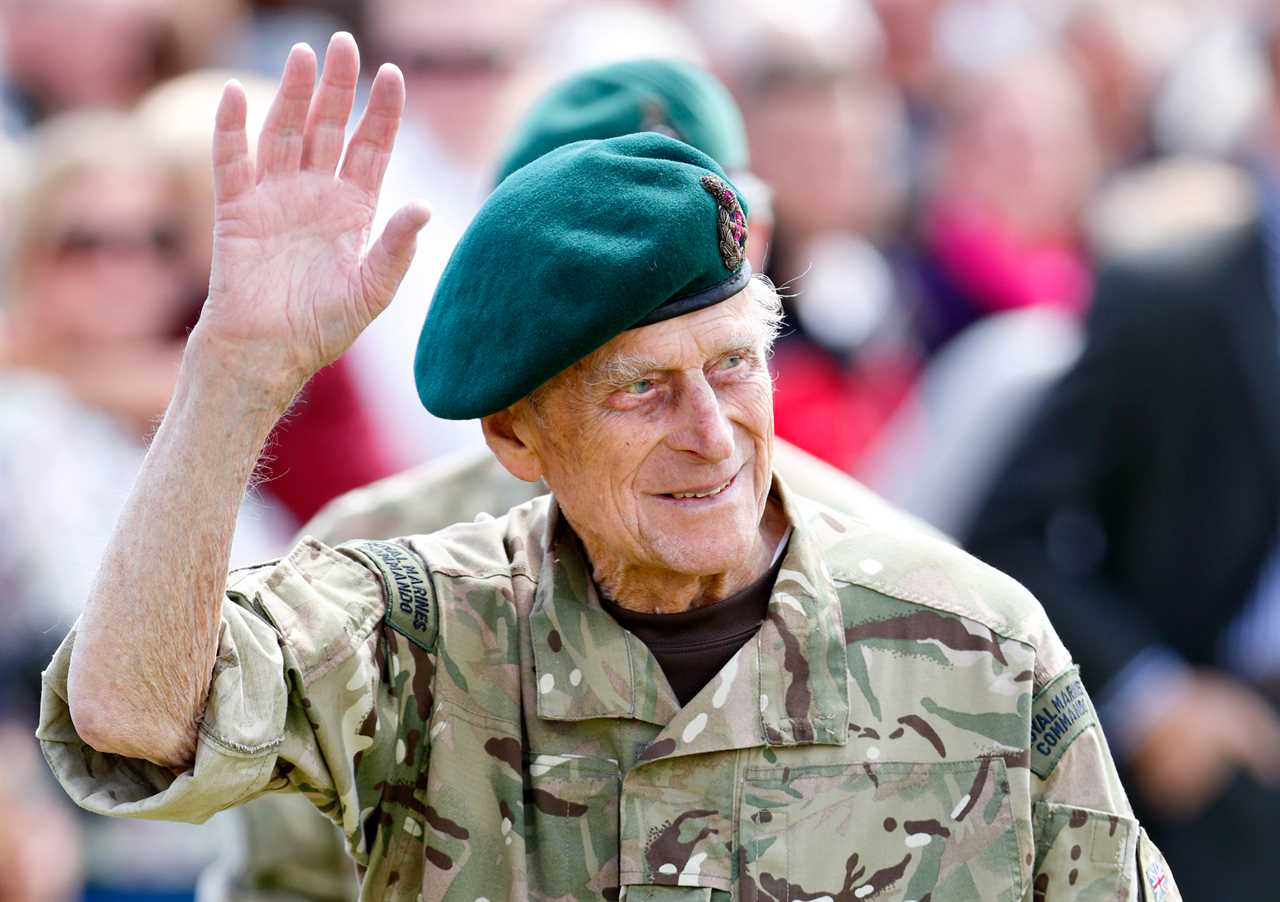
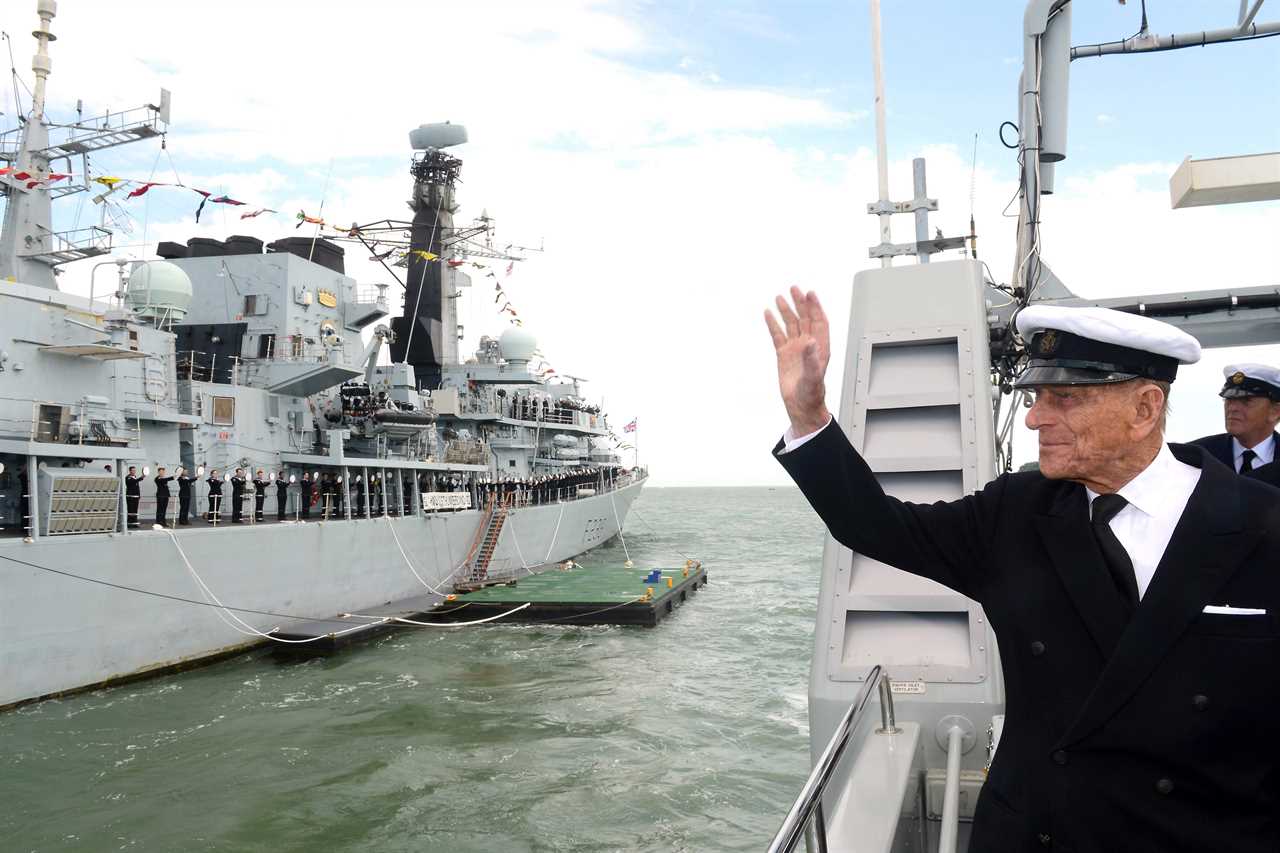
At exactly the same time the Honourable Artillery Company fired its 105mm light guns will fire from the Tower of London.
Sister units from the Royal Artillery fired guns at Cardiff Castle, Edinburgh Castle and Hillsborough Castle in Belfast.
The Navy fired from its Portsmouth and Devonport bases.
The Royal Gibraltar Regiment fired from the Rock.
“Similar gun salutes were fired to mark the death of Queen Victoria in 1901 and Winston Churchill in 1965,” the MoD added.
“The tradition of gun salutes being fired throughout the country to mark significant national events dates back to at least the eighteenth century, and there are historical records of salutes taking place as early as the 14th century when guns and ammunition began to be adopted more widely.”
Britain’s top warrior General Sir Nick Carter said Prince Philip “remained devoted to the Royal Navy and the Armed Forces as a whole”.
Defence Secretary Ben Wallace said: “We celebrate his life of service and offer our condolences to Her Majesty the Queen and the Royal Family.”
Some say Prince Philip could have become the First Sea Lord had he not married Queen Elizabeth – and his love for the navy spanned decades.
At the onset of WWII, Philip started at the Royal Naval College at Dartmouth, where he would go on to be named “best cadet”.
He joined the Royal Navy in 1940, serving as a midshipman on HMS Ramillies, and was posted to the Indian Ocean.
As a young naval officer, he was praised for his actions in the decisive Battle of Cape Matapan against the Italian fleet in March 1941.
At the age of 21, Philip was one of the youngest officers in the Royal Navy to be made First Lieutenant and second-in-command of a ship.
And the duke was on HMS Whelp on September 2 1945 in Tokyo Bay when the Japanese surrendered.

